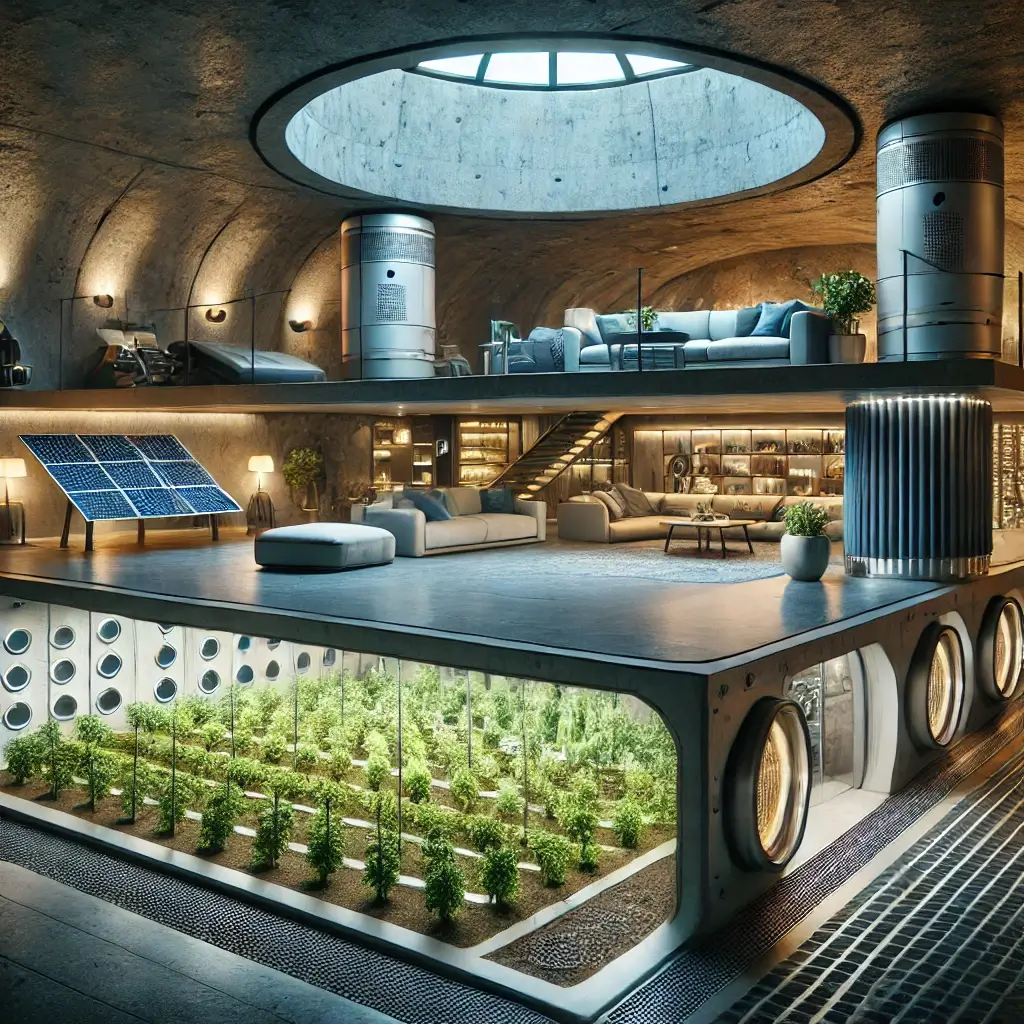Investing in Resilience: Why Luxury Bunkers Offer 35% Appreciation Rates in Uncertain Times
The Evolution of Luxury Bunkers
As global challenges escalate, the concept of luxury has expanded to include sustainability and resilience. For ultra-high-net-worth (UHNW) individuals, the modern luxury bunker represents a paradigm shift, blending cutting-edge security features with environmental stewardship. These high-end security compounds are not just fortresses against external threats but self-sustaining ecosystems designed for long-term habitation. They cater to the growing demand for secure yet luxurious spaces that align with broader environmental and societal values.
Market Growth and Investment Trends
The Knight Frank Wealth Report (2024) identifies a 300% increase in investment in these properties since 2020, a trend driven by a confluence of factors: rising geopolitical instability, climate-related risks, and the desire for sustainable living. Unlike traditional survival shelters, these compounds prioritize a balance between protection, comfort, and ecological responsibility. In this article, we explore how luxury bunkers are redefining secure living, their market dynamics, and the innovations driving this evolution.
The Sustainability Advantage
Luxury bunkers have emerged as flag bearers of sustainable innovation in real estate. Designed to minimize environmental impact while maximizing resource efficiency, these compounds exemplify forward-thinking architecture and engineering.
Renewable Energy and Resource Management
Modern luxury bunkers are equipped with renewable energy systems, including solar panels, wind turbines, and advanced battery storage solutions. These systems ensure that the compounds remain operational without reliance on external power grids. Water recycling systems, coupled with atmospheric water generators, provide a sustainable solution to meet potable water needs. Hydroponic and aquaponic systems for food production further enhance self-sufficiency, making these compounds largely independent of external supply chains.
Low-Impact Construction
Developers are increasingly adopting low-impact construction practices to align with environmental goals. The use of sustainable materials, energy-efficient designs, and modular construction techniques reduces the carbon footprint associated with these projects. According to the International Journal of Security Design (2024), many compounds are now built underground or semi-underground, utilizing the natural insulation properties of the earth to optimize energy efficiency.
Market Trends and Investment Potential
The demand for luxury bunkers has soared as UHNW individuals and corporate entities recognize their value as both secure living spaces and financial assets. The Morgan Stanley Ultra-High-Net-Worth Real Estate Analysis (2024) notes that these properties appreciate at rates exceeding those of conventional luxury estates, particularly when they integrate sustainable features.
Appreciation Metrics
Basic luxury bunkers: Annual appreciation of 15-20%, driven by their affordability and practicality.
Ultra-premium compounds: Appreciation rates surpassing 35%, reflecting their exclusivity and advanced features.
Sustainability integration premium: Properties with extensive renewable energy and resource management systems command an additional 20-30% in market value.
Strategic Location
Location continues to play a critical role in determining market value. Remote areas with natural protection and semi-urban proximities with transportation access are particularly desirable. Semi-urban compounds offer a balance of accessibility and isolation, attracting premiums of 30-40% compared to other high-end properties.
Innovations Shaping the Future
Technological advancements are revolutionizing the luxury bunker landscape, transforming them into hubs of innovation and sustainability.
AI and Automation
Artificial intelligence systems are increasingly being integrated into luxury bunkers to manage energy use, monitor security, and optimize resource allocation. These systems enable real-time threat detection and response, enhancing the overall safety and efficiency of the compounds.
Community-Centric Designs
A growing trend involves creating multi-family or community-oriented compounds. These designs focus on fostering social interactions and sharing resources while maintaining privacy and security. Such developments cater to UHNW families who value community living without compromising safety.
Psychological and Aesthetic Considerations
Designs now emphasize mental well-being alongside physical security. Features such as natural light simulation, acoustic engineering, and biophilic design elements create a calming environment. These innovations ensure that residents experience comfort and normalcy, even in challenging scenarios.
Conclusion
Luxury bunkers have transcended their origins as mere survival shelters to become emblematic of sustainable and secure living. By integrating cutting-edge technologies with eco-conscious design, these compounds appeal to UHNW individuals who value both resilience and responsibility. As global uncertainties persist, the market for luxury bunkers is poised for sustained growth, driven by innovation and the demand for long-term solutions to modern challenges. These structures are more than real estate assets; they are investments in a sustainable and secure future.
References
Knight Frank Wealth Report 2024
Morgan Stanley Ultra-High-Net-Worth Real Estate Analysis 2024
International Journal of Security Design 2024
Architectural Digest Secure Living Spaces 2024
Forbes Luxury Bunker Market Review 2024
